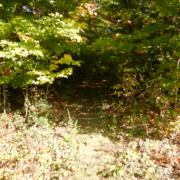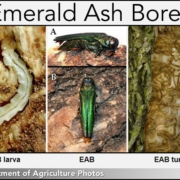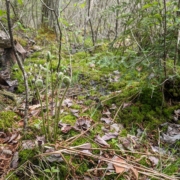Declining Biodiversity in Vermont and New Hampshire Forests, Part II: Impact of Deer on Upper Valley Forests
As most Upper Valley residents will have noticed, white-tailed deer are abundant in our area, and the overlap between their habitats and our residential and recreational areas is increasing.
But while many people are familiar with the risks deer pose to motorists and their role in spreading tick-borne diseases like Lyme, their impacts on biodiversity within our forests are discussed less often.
On May 1, Upper Valley residents gathered at the Howe Library in Hanover to learn those answers and more in a talk titled “Oh Deer: Impact of Deer on Upper Valley Forests,” featuring speakers including Ryan Rebozo, Director of Conservation Science at the VT Center for Ecostudies; Becky Fuda, Wildlife Biologist/Deer Project Leader for the NH Fish and Game Department; Nick Fortin, VT Wildlife Biologist and author of the 2023 Deer Harvest Report; and Bill LaPan, President of the Grafton County Fish and Game Association.
The second in a series hosted by local organizations including the UVLT on the impacts of declining biodiversity in Vermont and New Hampshire forests, the talk offered critical insights into the importance of deer population management for overall ecosystem health.
How Deer Impact Ecosystems
Rebozo kicked off the talk by discussing how deer density is measured and why that matters. While he noted that the tipping points at which deer populations become damaging vary based on habitat type, there are a few rough guidelines to keep in mind in New England.
When deer populations reach 8-11 deer per square mile, Rebozo explained, it’s possible to see negative impacts on the species that deer prefer to browse, such as oak. In certain areas he’s tracked in Vermont, for example, populations of both established oak trees and seedlings are healthy — but populations of saplings have been decimated by deer, creating a critical gap in the forest lifecycle.
Once populations reach 15-20 deer per square mile, those impacts start to cascade as deer move beyond preferred species and consume other plants, both woody and herbaceous. This can quickly impact invertebrate biodiversity, which is closely tied to plant life, and move up the food web to harm birds that feed on those insects or that nest near the forest floor in plants consumed by deer.
Deer overbrowsing also indirectly promotes the rise of invasive plant species. Since deer preferentially browse for native plants, this removes the competition for invasive species like buckthorn and honeysuckle, allowing them to quickly crowd out the species that are critical to our ecosystems.
As Rebozo pointed out, the longer these cascading impacts are allowed to take hold, the harder it is for humans to effectively reduce deer overpopulation and for ecosystems to recover. This makes it essential to monitor deer populations and impacts closely, a task that is made more manageable with the growing use of drone technology.
Managing Deer Populations
In New Hampshire and Vermont, the primary method of deer population control is the annual hunting season, or “harvest.” Fuda and Fortin both discussed how state biologists use data to determine annual harvest targets and how both uncontrollable outside factors and planned interventions can impact their success.
As Fuda noted, one key to population control is keeping the number of female deer in check since deer are polygamous and highly productive. This means that the number of “antlerless days” within the hunting season each year is a key consideration in state planning. In New Hampshire, municipalities can also take advantage of the Deer Management Assistance Program, which allows them to distribute additional antlerless permits for use within designated areas. Hanover has participated in this program since 2018.
However, factors beyond the number of permits issued also impact each deer harvest. For example, Fortin shared that in 2023, warm, rainy weather significantly reduced numbers in the Vermont fall archery and muzzleloader seasons, and the timing of Youth Weekend in relation to sports seasons has kept some hunters from coming out — issues that the state hopes to address through upcoming regulatory changes.
In addition to those overviews, LaPan shared how aspiring deer hunters can access resources including safety courses and hunter education opportunities through the Grafton County Fish and Game Association.
Ultimately, as the panelists made clear, deer aren’t just a nuisance – they’re a real threat to our ecosystem, and population management needs to be a priority in all our communities. The UVLT has long advocated for responsible deer hunting for population management, and we encourage landowners to allow hunters onto their land.
Don’t miss the last talk in the series!
Session 3: (Open) Space Invaders: How Invasive Plants Threaten Biodiversity
May 22, 6-7:30 PM
Howe Library Mayer Room, Hanover
Zoom link


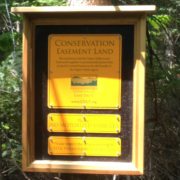
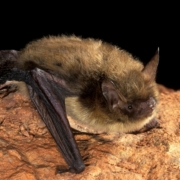 Photo by J. SCOTT ALTENBACH
Photo by J. SCOTT ALTENBACH